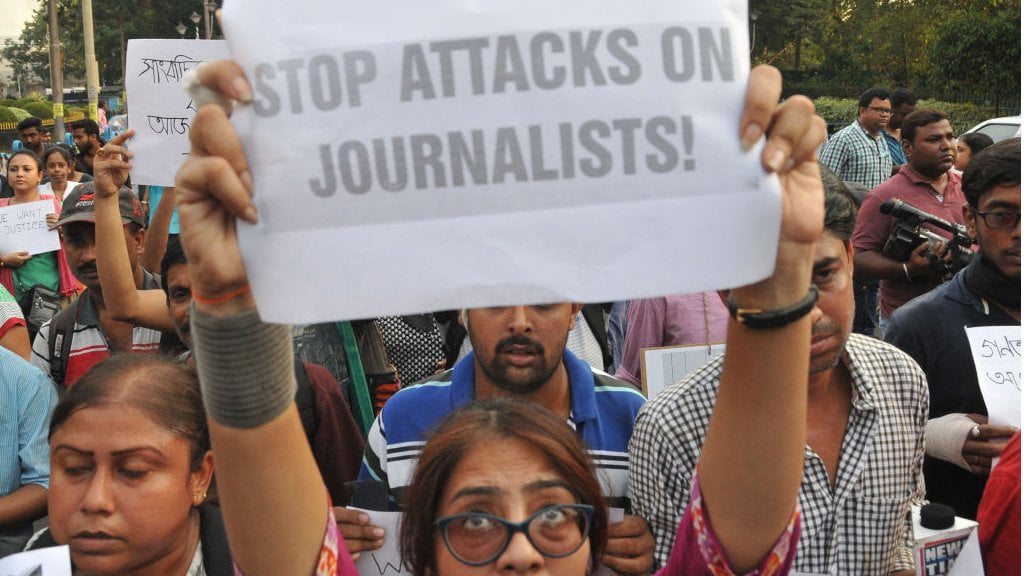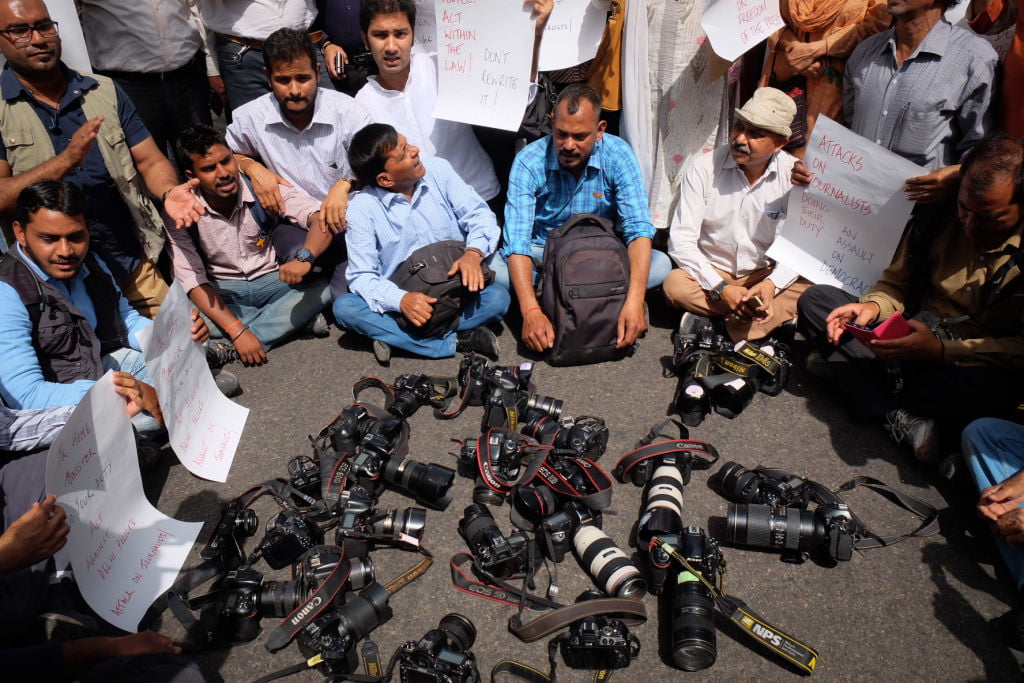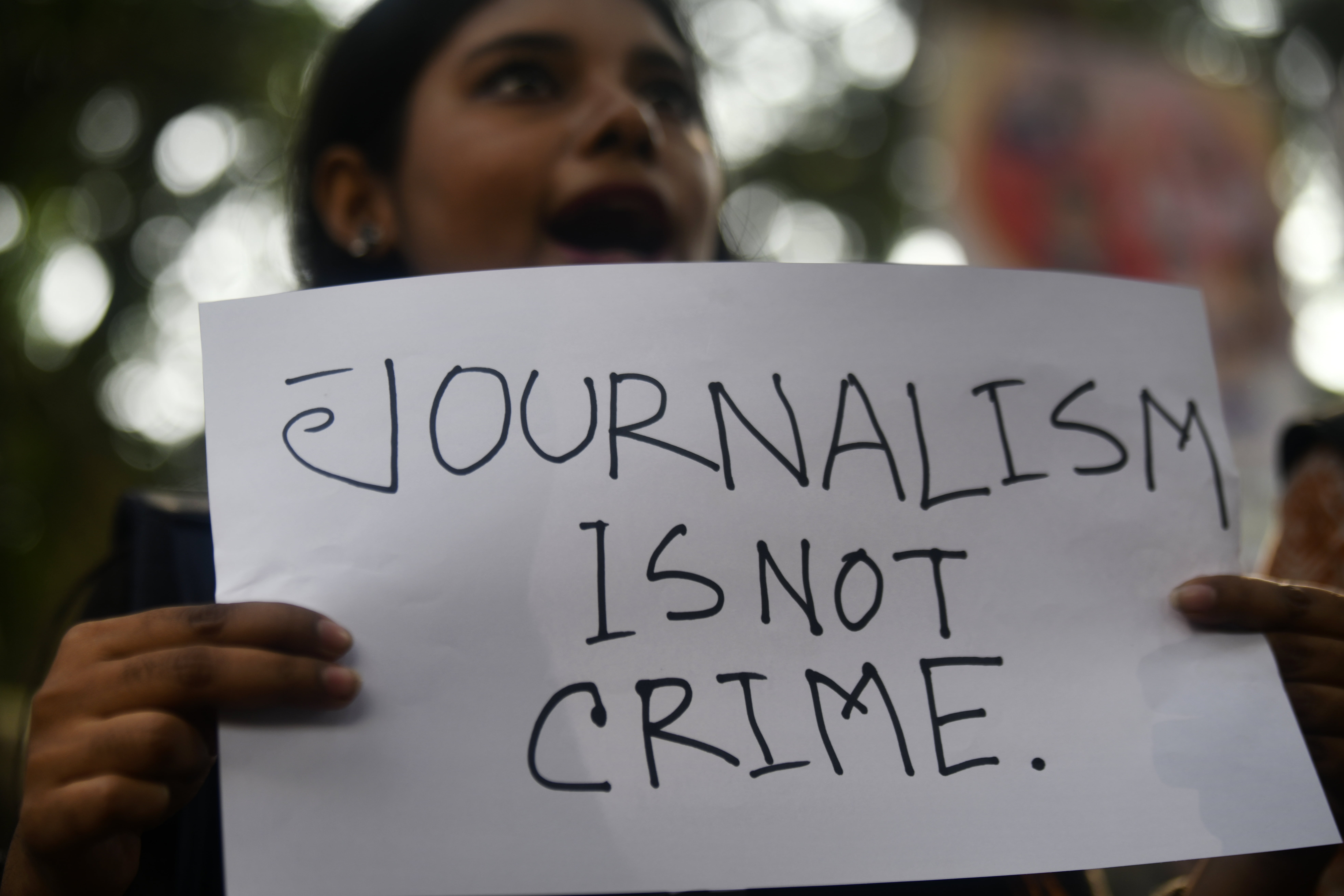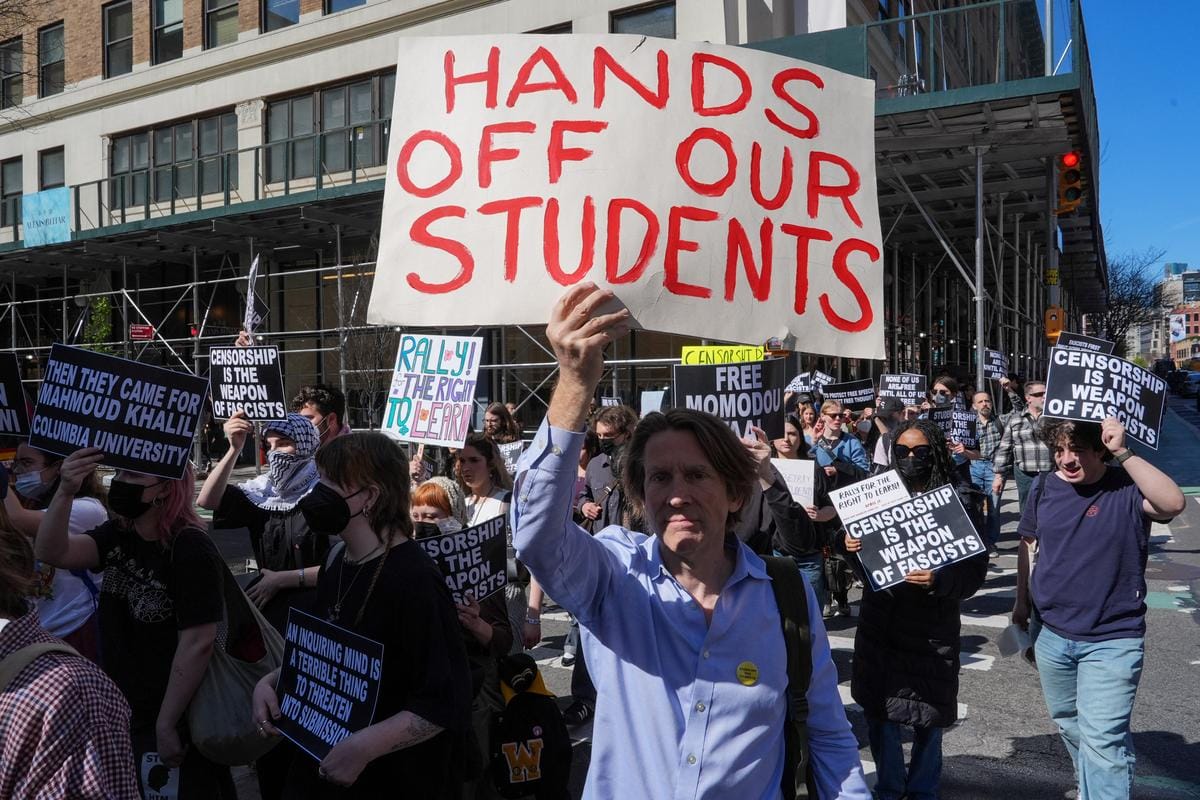Any democracy relies on a free and independent press to function. It acts as a key watchdog, keeping powerful institutions accountable, promoting openness, and providing citizens with the information they need to make proper decisions.
India, the world’s largest democracy, has experienced a troubling trend in its press freedom ranking. According to the 2024 reports by the World Press Freedom Index by Reporters Without Borders, India ranks 159th out of 180 countries, though it has shown a slight improvement from 161st in 2023, but the overall picture remains bleak.
Methodology and key findings
The RSF Index assesses press freedom using six criteria: political context, legal framework, economic context, socio-cultural context, and safety. Each indicator is assigned a secondary score that ranges from 0 to 100. All subsidiary scores contribute equally to the global score. Within each indication, all questions and subquestions are equally weighted.

India’s score has steadily declined over the last few years. In 2020, it ranked 142nd, demonstrating a dramatic slide in just four years. According to the 2024 report, various reasons contribute to this decline. Firstly violence against Journalists.
According to the Rights and Risks Analysis Group (RRAG), 194 journalists, seven of whom are women, were targeted in India in 2022. The journalists were targeted by state agencies, non-state political actors, and criminals, as well as armed opposition organisations.
Jammu and Kashmir had the largest number of targeted journalists (48), followed by Telangana (40). Press freedom has not improved this year, and journalists continue to face harsh attacks.
Secondly, media ownership concentration. RSF’s report on India states that “Reliance Industries group’s magnate Mukesh Ambani, a personal friend of the prime minister, owns more than 70 media outlets that are followed by at least 800 million Indians. The NDTV channel’s acquisition at the end of 2022 by Gautam Adani, a tycoon who is also close to Modi, signalled the end of pluralism in the mainstream media. Recent years have also seen the rise of “Godi media” (a play on Modi’s name and the word for “lapdogs”) – media outlets that mix populism and pro-BJP propaganda. Through pressure and influence, the old Indian model of a pluralist press is being called into question.”
And lastly, sedition laws and digital restrictions. India’s legal framework consists of wide and vaguely defined laws like sedition which can be used to muzzle opposing views. The government has also set limits on online content, triggering concerns about censorship.
Moreover, the report also stated that “Modi has introduced several new laws that will give the government extraordinary power to control the media, censor news, and silence critics, including the 2023 Telecommunications Act, the 2023 draft Broadcasting Services (Regulation) Bill, and the 2023 Digital Personal Data Protection Act.”
India’s ranking in press freedom has been a source of concern for several years, indicating an overall pattern of declining media freedom. Though there has been an improvement in the last few years, the above reasons highlight ongoing challenges that require immediate action.
One major factor contributing to India’s low rating is the frequency of attacks on journalists. Over the years, there has been an alarming increase in violence against journalists, which is often carried out with impunity. Such attacks not only imperil journalists’ lives, but they also violate the fundamental ideals of a free press. The murders of Gauri Lankesh and Shujaat Bukhari serve as stark reminders of the dangers journalists confront in the country.

Furthermore, India’s legal structure, which was allegedly meant to defend press freedom, is increasingly being utilised to suppress dissent and silence independent journalism. Laws including sedition, criminal defamation, and the Unlawful Activities (Prevention) Act (UAPA) have been used to intimidate journalists who are critical of the government. The arbitrary application of these regulations not only suppresses free expression but also undermines public trust in the media as a watchdog.
Another disturbing development is the increase in digital censorship and surveillance. The government’s broad interpretation of regulations such as the Information Technology (Intermediary Guidelines and Digital Media Ethics Code) Rules, 2021 has given authorities the right to restrict internet content and monitor digital communications. This violation of digital liberties endangers the autonomy of online media platforms as well as journalists’ privacy.
Furthermore, media organisations’ economic survival remains tenuous, with many battling to stay afloat in the face of declining advertising revenues and government pressures. The concentration of media ownership among a few companies raises worries about editorial independence and media pluralism.
What do the past reports say
Following upon the comparisons with the past reports, the Press Freedom Index does reveal a continuation of concerns identified in recent years. RSF’s assessments of India’s media landscape have consistently highlighted the ongoing pressure on journalists and the growing judicial persecution of dissenting voices.
RSF underlined the increasing pressure on journalists in its 2023 report, noting a trend that continued the following year. The use of legal tools to discourage critical reporting is a perennial concern, with journalists suffering arrest, prosecution, and jail for their efforts. The judicial persecution of journalists who criticise the government highlights the obstacles to press freedom under India’s legal system.
RSF underlined the increasing pressure on journalists in its 2023 report, noting a trend that continued the following year. The use of legal tools to discourage critical reporting is a perennial concern, with journalists suffering arrest, prosecution, and jail for their efforts. The judicial persecution of journalists who criticise the government highlights the obstacles to press freedom under India’s legal system.
Similarly, the 2022 report shed light on rising internet dangers and the government’s use of surveillance techniques such as the Pegasus spyware to target journalists and silence dissent. The digital world, previously regarded as a haven for free expression, has rapidly become a fight for control and surveillance. The use of advanced technologies to monitor and harass journalists represents a grave step forward in the assault on media freedom.
While the 2024 report acknowledges a minor increase in India’s press freedom ranking, it warns against interpreting this as a significant shift in the overall climate. The concept of an “unofficial state of emergency” for press freedom in India emphasises the situation’s intensity, implying a systemic deterioration of media liberties beyond simple numerical rankings.

The term “unofficial state of emergency” describes the widespread atmosphere of intimidation, restriction, and self-censorship in India’s media landscape. Despite apparent gains, journalists continue to work in an atmosphere of fear and uncertainty, with the prospect of retaliation looming over any who dare to speak truth to power.
In this context, the 2024 study provides a sobering reminder of the challenges to India’s press freedom. It urges for immediate action to address the core causes of media repression, such as ensuring journalists’ safety, upholding the rule of law, and protecting media independence from undue government intervention.
Ultimately, the RSF’s evaluation of India’s press freedom emphasises the significance of keeping alert in the fight for democratic values and fundamental rights. Without concerted steps to reverse the trend of declining media freedoms, India risks jeopardising its democratic credentials and weakening public trust in its institutions.
Impact on democracy
A free and independent press is an essential component of a functioning democracy. It permits for the examination of the position of powers, fosters transparency, and empowers citizens to make informed decisions. When press freedom is threatened, democratic institutions are weakened, and public accountability suffers.
The erosion of press freedom in India has a domino effect. It discourages investigative journalism, silences critical voices, and reduces public understanding of major concerns. This can result in increasing corruption, human rights violations, and societal unrest.
Press freedom difficulties have hindered India’s strong media culture. To improve, journalists must be better protected, media ownership should be more varied, and free speech rights must be upheld. Clearer media norms and public backing are also required for India to reclaim its status as a champion of press freedom, which is essential for a healthy democracy.
About the author(s)
With a passion for storytelling and a keen interest in human behavior, Iti Dewangan is currently honing her skills in journalism, psychology, and English Literature. Having contributed to esteemed organizations like The Wire, Iti is dedicated to amplifying voices, uncovering truths, and making a positive impact through her writing. With a vision to become a respected journalist, she endeavors to navigate the ever-evolving media landscape with integrity, empathy, and a commitment to truth.






